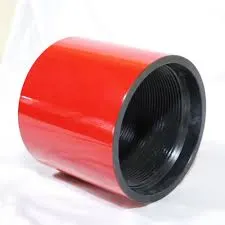- Afrikaans
- Albanian
- Amharic
- Arabic
- Armenian
- Azerbaijani
- Basque
- Belarusian
- Bengali
- Bosnian
- Bulgarian
- Catalan
- Cebuano
- Corsican
- Croatian
- Czech
- Danish
- Dutch
- English
- Esperanto
- Estonian
- Finnish
- French
- Frisian
- Galician
- Georgian
- German
- Greek
- Gujarati
- Haitian Creole
- hausa
- hawaiian
- Hebrew
- Hindi
- Miao
- Hungarian
- Icelandic
- igbo
- Indonesian
- irish
- Italian
- Japanese
- Javanese
- Kannada
- kazakh
- Khmer
- Rwandese
- Korean
- Kurdish
- Kyrgyz
- Lao
- Latin
- Latvian
- Lithuanian
- Luxembourgish
- Macedonian
- Malgashi
- Malay
- Malayalam
- Maltese
- Maori
- Marathi
- Mongolian
- Myanmar
- Nepali
- Norwegian
- Norwegian
- Occitan
- Pashto
- Persian
- Polish
- Portuguese
- Punjabi
- Romanian
- Russian
- Samoan
- Scottish Gaelic
- Serbian
- Sesotho
- Shona
- Sindhi
- Sinhala
- Slovak
- Slovenian
- Somali
- Spanish
- Sundanese
- Swahili
- Swedish
- Tagalog
- Tajik
- Tamil
- Tatar
- Telugu
- Thai
- Turkish
- Turkmen
- Ukrainian
- Urdu
- Uighur
- Uzbek
- Vietnamese
- Welsh
- Bantu
- Yiddish
- Yoruba
- Zulu
stainless steel reducer coupling
Understanding Stainless Steel Reducer Couplings Features, Applications, and Benefits
In industrial piping systems, the need for versatile and durable components is paramount. One such component is the stainless steel reducer coupling, an essential fitting that plays a pivotal role in connecting pipes of different diameters. This article explores the key features, applications, and benefits of stainless steel reducer couplings in various industries.
What is a Stainless Steel Reducer Coupling?
A stainless steel reducer coupling is a type of pipe fitting used to connect two pipes of different diameters. This coupling allows for the transition from a larger pipe to a smaller one, thereby facilitating a reduction in flow size. The unique design of reducer couplings enables them to manage the flow of liquids and gases efficiently while minimizing turbulence.
Reducer couplings are typically made from various grades of stainless steel, which are known for their resistance to corrosion, rust, and staining. Common grades include 304 and 316, each offering distinct advantages depending on the application. For instance, grade 316 contains molybdenum, providing enhanced resistance to chlorides and other harsh chemicals, making it ideal for marine environments and chemical processing.
Key Features of Stainless Steel Reducer Couplings
1. Durability Stainless steel is renowned for its strength and longevity. It can withstand high pressures, extreme temperatures, and aggressive environments, making it suitable for a variety of applications.
2. Corrosion Resistance Unlike ferrous metals, stainless steel does not rust easily. This characteristic is essential in industries where exposure to moisture, chemicals, and other corrosive elements is common.
3. Versatility Stainless steel reducer couplings can accommodate various pipe sizes and configurations, making them an adaptable solution for diverse piping systems.
4. Easy Installation These couplings usually come with threaded ends, flanged ends, or socket welds. This variety allows for straightforward installation procedures, reducing labor time and costs.
5. Hygienic Properties Stainless steel is a non-porous material, which makes it easy to clean and sanitize. This feature is especially crucial in industries such as food processing and pharmaceuticals, where hygiene is paramount.
Applications of Stainless Steel Reducer Couplings
Stainless steel reducer couplings find applications across numerous industries, including
stainless steel reducer coupling

- Oil and Gas In the oil and gas industry, resilient materials are necessary to withstand harsh environments. Stainless steel reducer couplings are used to connect pipelines for the transportation of crude oil and natural gas.
- Chemical Processing The chemical industry often deals with aggressive substances that can corrode typical materials. The corrosion-resistant properties of stainless steel make these couplings ideal for transporting chemicals safely.
- Marine Applications Given their resistance to saltwater and other corrosive agents, stainless steel reducer couplings are commonly used in marine environments, including shipbuilding and offshore platforms.
- Water Treatment In water treatment facilities, these fittings are essential for connecting pipelines that transport clean and wastewater while ensuring the integrity of the system.
- Food and Beverage In the food and beverage industry, hygiene is crucial. Stainless steel reducer couplings comply with sanitary regulations, making them suitable for the transportation of food products.
Benefits of Using Stainless Steel Reducer Couplings
The incorporation of stainless steel reducer couplings in piping systems offers several advantages
- Cost-Effective While the initial investment may be higher than other materials, the durability and low maintenance requirements of stainless steel ultimately lead to cost savings over time.
- Enhanced Flow Control By providing a smooth transition between different pipe sizes, these couplings help maintain consistent flow rates, reducing the risk of back pressure and improving system efficiency.
- Environmental Resistance The ability to withstand various environmental factors, including temperature fluctuations and exposure to chemicals, ensures the longevity of piping systems.
- Safety and Reliability The robust construction of stainless steel reducer couplings minimizes the risk of leaks and failures, contributing to overall system safety and reliability.
In conclusion, stainless steel reducer couplings are essential components in modern piping systems, offering durability, corrosion resistance, and versatility. Their applications span multiple industries, proving their worth in both efficiency and safety. As industries continue to seek reliable solutions for piping needs, the demand for stainless steel reducer couplings is likely to grow, marking them as a staple in piping design and installation.
-
Tubing Pup Joints: Essential Components for Oil and Gas OperationsNewsJul.10,2025
-
Pup Joints: Essential Components for Reliable Drilling OperationsNewsJul.10,2025
-
Pipe Couplings: Connecting Your World EfficientlyNewsJul.10,2025
-
Mastering Oilfield Operations with Quality Tubing and CasingNewsJul.10,2025
-
High-Quality Casing Couplings for Every NeedNewsJul.10,2025
-
Boost Your Drilling Efficiency with Premium Crossover Tools & Seating NipplesNewsJul.10,2025







